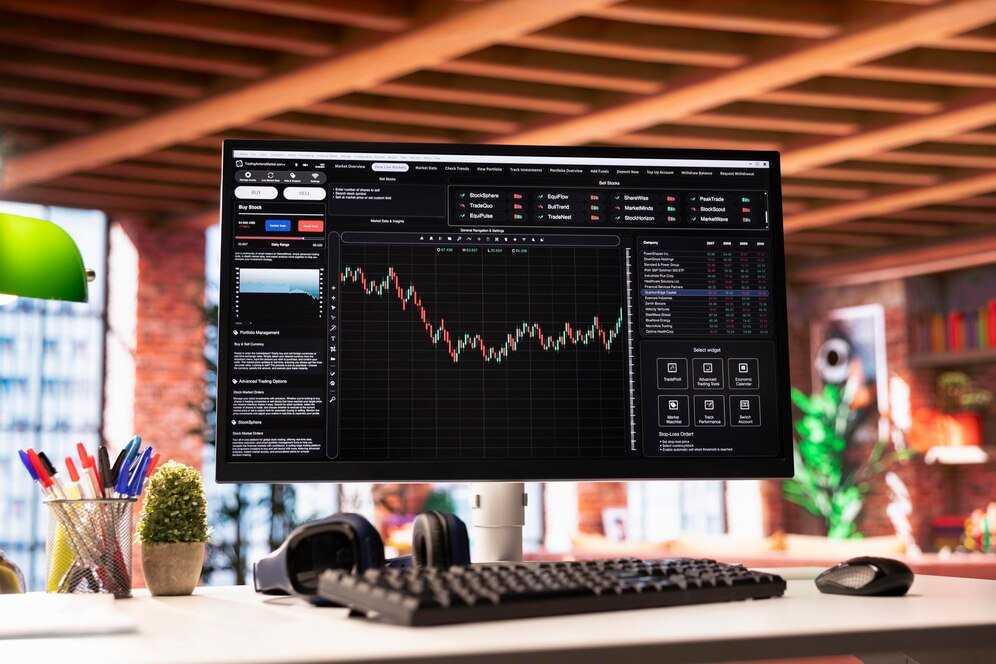Cryptocurrency trading has evolved rapidly over the years, introducing new technologies and models to meet the needs of both traders and investors. One such innovation that has gained significant traction is liquidity pools. These pools are at the heart of many modern exchanges, particularly decentralized exchanges (DEXs), and they play a crucial role in ensuring efficient, seamless trading.
In this blog, we’ll dive into what liquidity pools are, how they function, and why they are essential for exchanges, particularly decentralized platforms.
What Are Liquidity Pools?
A liquidity pool is a collection of funds or assets that are locked in a smart contract on a blockchain. These funds are provided by liquidity providers (LPs), who contribute their cryptocurrency holdings to facilitate trading on decentralized exchanges (DEXs) or other decentralized finance (DeFi) platforms. The goal of a liquidity pool is to ensure that there’s always enough liquidity (or assets) available for users to trade.
Unlike traditional order book exchanges (where buyers and sellers meet to execute trades), liquidity pools enable automatic and instant trade execution using algorithms and smart contracts. Instead of matching a buy order with a sell order, trades are executed against the pool of assets that have been deposited into the liquidity pool.
How Do Liquidity Pools Work?
Liquidity pools work on the principles of automated market makers (AMMs), which are algorithms that facilitate the buying and selling of assets directly from the pool. Here’s a simple breakdown of how they function:
- Contributing Liquidity: Liquidity providers (LPs) deposit an equal value of two tokens (for example, Bitcoin and Ethereum) into a liquidity pool. This can be done on DEXs like Uniswap, SushiSwap, or Balancer.
- Providing Liquidity for Trades: Once the assets are deposited, other users can trade these assets directly with the liquidity pool, not another trader. The price of assets in the pool is determined by an algorithm, which adjusts based on the ratio of the tokens in the pool.
- Pricing Algorithm: Most liquidity pools use a simple formula, such as x * y = k, where x and y represent the number of each asset in the pool, and k is a constant. This formula helps determine the price of assets based on supply and demand. When more people buy one token from the pool, the price of that token increases due to its reduced availability in the pool.
- Earning Fees: In exchange for providing liquidity, LPs earn a share of the trading fees generated by the trades that occur in the pool. These fees are typically a percentage of each transaction, and they are distributed proportionally to the liquidity providers based on how much they contributed to the pool.
The Importance of Liquidity Pools in Cryptocurrency Exchanges
Liquidity pools are critical to the functioning of many exchanges, especially decentralized ones, and here’s why:
1. Ensuring Market Liquidity
Liquidity is the ability to buy or sell an asset without significantly affecting its price. In traditional markets, liquidity is provided by market makers (i.e., individuals or firms that buy and sell large quantities of assets to maintain order book liquidity). However, in decentralized markets, liquidity pools fulfill this function.
With sufficient liquidity in a pool, traders can execute transactions at a fair price without having to wait for someone on the other side of the trade to match their order. This eliminates the need for a centralized order book, making DEXs much more efficient and decentralized.
2. Instant Trades
Since liquidity pools are algorithm-driven, users can make trades at any time, even if there are no other active buyers or sellers. This contrasts with centralized exchanges (CEXs), which rely on an order book and require a match between a buyer and a seller. The result is a more fluid and immediate trading experience.
3. No Need for Order Matching
On centralized exchanges, trades are matched between buyers and sellers who each submit orders into an order book. In liquidity pools, there is no need for such matching because the trades are conducted directly with the pool of funds. This makes decentralized exchanges more scalable and efficient.
4. Lower Slippage
Slippage refers to the difference between the expected price of a trade and the actual price at which the trade is executed. When liquidity is high, slippage is minimized. Liquidity pools help reduce slippage by offering a large reserve of assets, which leads to more stable and predictable pricing for traders.
Risks and Challenges of Liquidity Pools
While liquidity pools provide several benefits, there are risks and challenges associated with them that traders and liquidity providers should be aware of:
1. Impermanent Loss
One of the primary risks for liquidity providers is impermanent loss. This occurs when the price of the assets in the pool diverges significantly from when they were initially deposited. In simple terms, if one asset in the pool increases in value relative to the other, LPs may end up with less valuable assets when they withdraw their liquidity compared to if they had simply held onto their assets.
For example, if you provided liquidity to an ETH/USDT pool and the price of ETH rises significantly, the pool will automatically sell off ETH to maintain the pool’s balance. This means you might end up with fewer ETH and more USDT, which could result in a loss if you had held onto ETH outside the pool.
2. Smart Contract Risks
Liquidity pools rely on smart contracts, and these contracts are only as secure as the code behind them. If there are bugs or vulnerabilities in the code, it could lead to the loss of funds. This is why it’s crucial to choose liquidity pools hosted on reputable platforms that have undergone rigorous security audits.
3. Slippage During High Volatility
While liquidity pools minimize slippage in most cases, they can still be affected by extreme volatility. In situations where there is a large imbalance in the pool, users might experience higher slippage, especially when executing large trades.
How to Participate in Liquidity Pools
Participating in a liquidity pool typically involves these steps:
- Choose the Right Exchange: Decide whether you want to participate in a centralized or decentralized exchange. DEXs like Uniswap, SushiSwap, and PancakeSwap are popular options for liquidity provision.
- Select a Pair: Choose which two tokens you want to provide liquidity for. Typically, you need to deposit equal values of both tokens into the pool (e.g., $500 worth of ETH and $500 worth of USDT).
- Deposit Your Tokens: After selecting your pool, deposit your tokens into the liquidity pool via the exchange’s interface.
- Earn Fees: As trades occur in the pool, you’ll earn a share of the transaction fees. The more liquidity you provide, the higher your potential earnings.
- Withdraw Liquidity: You can withdraw your liquidity at any time, although be mindful of any impermanent loss or changes in the pool’s value.
Conclusion
Liquidity pools are a fundamental aspect of decentralized exchanges and the broader DeFi ecosystem, enabling instant, efficient, and decentralized trading. By allowing traders to interact directly with pools of liquidity, they eliminate the need for centralized intermediaries and provide a more seamless trading experience.
For liquidity providers, pools offer the opportunity to earn fees in exchange for contributing assets to the ecosystem. However, it’s essential to be aware of the risks, including impermanent loss and smart contract vulnerabilities. With proper research and risk management, liquidity pools can be a valuable and rewarding tool for both traders and investors in the crypto space.
Understanding how liquidity pools work and their role in exchanges is key to making informed decisions in the world of cryptocurrency trading. Whether you’re a trader looking for a seamless exchange experience or an investor interested in earning passive income through liquidity provision, liquidity pools offer significant potential in the evolving DeFi landscape.













